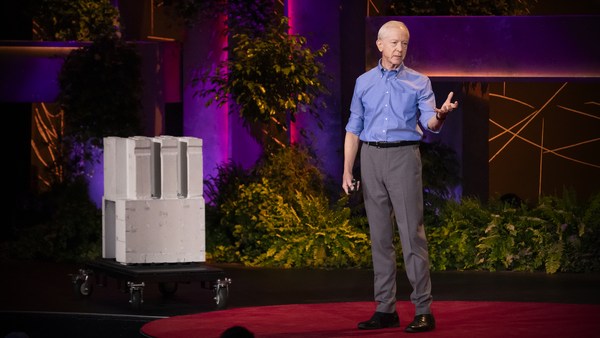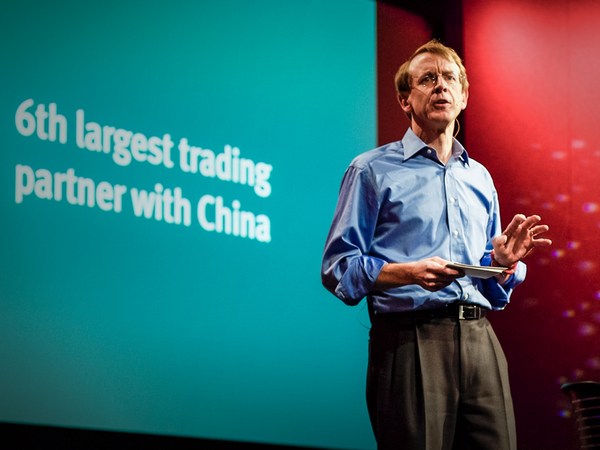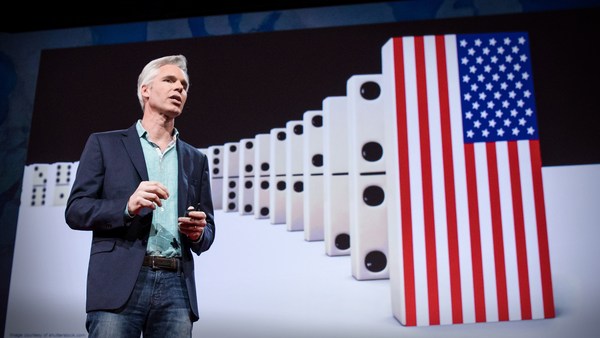To solve climate change, we have to focus on the big emissions. I’m talking the gigatons, billions of tons of greenhouse gases coming from industries like steel or chemicals or energy, or what I focus on, cement. Think of it as the glue in concrete, which is the second most-consumed thing on the Earth, second only to water. Cement alone accounts for roughly eight percent of the world’s CO2 emissions. So if it were a country, it would be producing more emissions than India and sit in third place, just behind the United States. We have to solve for those emissions.
So I have good news. We can actually reduce or eliminate those emissions if we focus on technologies that actually work within the existing cement ecosystem. Look, cement and concrete are a risk-averse industry for good reason. It's going into bridges and tunnels and buildings, where performance and safety matter. So if we're going to have a meaningful impact on the CO2 emissions in this space, we have to leverage what the industry already does incredibly well. And that comes down to, really, four things.
First is leveraging the same feedstocks that are already used at every cement plant and are already at the billions of tons scale. Second, it’s leveraging as much of the capital infrastructure, from quarry through to product distribution, that's already in place to drive down costs and timelines. Third, it's producing a product that actually fits within the existing regulations so that contractors will be comfortable putting that product to market. And fourth, and most importantly, it's producing a product that's economically competitive with traditional cement, without a green premium.
So in order to understand how to actually achieve this, we have to look at cement in a little bit more detail. Why is it actually so CO2-intensive? Well the main ingredient in cement is limestone. Limestone is a type of rock that is actually 44 percent, by weight, solid CO2. So to make cement, you put that limestone into a kiln, and you heat it up to 1,450 degrees Celsius, using fossil fuels like coal and gas. The whole reason why you're heating it up is to actually drive the CO2 out of that limestone. So not only do you have the emissions from the carbon fuels, you also have the emissions from the limestone itself.
So how did it get there in the first place? Well that’s where the company I run today got its inspiration, from a company that started 17 years ago, called Calera. Calera took its cues from nature and how nature forms its building blocks. So if you look at coral reefs and shells in nature, what actually happens is you absorb CO2 in the ocean and make this reactive form of limestone, these little ball structures called vaterite. When you do that, you end up making this beautiful white powder that is actually 44 percent, by weight, CO2. And when you add water to it, it's going to want to transform back to aragonite or calcite, going through a cementing reaction. So what this allows us to do is take CO2 from being a waste and actually put it into the product. It's a brilliant concept.
So problem solved, right? Unfortunately, no. The concept worked technically, but it wasn't grounded in economics, and it was competitive, as opposed to additive, to the cement space. So we had to look at the problem in another way. How do we use that, or how do we fit within the existing cement industry as it is today, making a product that's cheap enough and can actually get to the gigatons of savings? And so what we figured out is we could take that technology and put it at existing cement kilns, alongside existing cement manufacturers. In doing so, we can bolt onto the back of their process, capture the CO2 that's coming out of the kiln with the lime that we produce from that limestone, and produce this product that can then be blended with traditional cement or utilized as a 100-percent cement replacement. By capturing that CO2 and turning it back into a product, we effectively double the amount of product we make, which is what makes it economically competitive.
So a little bit comically, we're taking limestone and we're turning it back into limestone, but we're going from an inert rock to a form of limestone that is actually a cement. And in doing so, we’re able to reduce CO2 emissions by 70 percent per ton when still using the fossil fuels, and if we integrate with clean electricity or green fuels, we get all the way to a zero-CO2 cement. So by dropping directly into existing plants, utilizing the existing product-distribution channels, we can work with the big cement players that already understand how to get to scale and how to get to a cheap cost. And that’s how we get to gigaton reductions. And this is real. While Forterra is only a four-year-old company, we were able to scale quickly to our first commercial plant, because we worked with the industry. Our plant in northern California came on line early in 2024 and proves this ability to bolt onto an existing plant and make a product that the industry can actually use. And we're not stopping there, with plans to scale globally. And thankfully, we're also not alone. There's a host of other companies working on trying to solve emissions in cement and concrete. But our secret sauce is fitting within the existing cement ecosystem and developing a product that's better from a pollution standpoint, while at the same time providing all the performance you need and that the contractors can work with. By scaling this way and working with the industry, we can get to these gigaton savings.
So again, by working with industry, as opposed to competing with industry, we can pave the way to zero-CO2 cement and solve the four billion tons coming from the cement industry in the next few decades.
Thank you.
(Applause)





